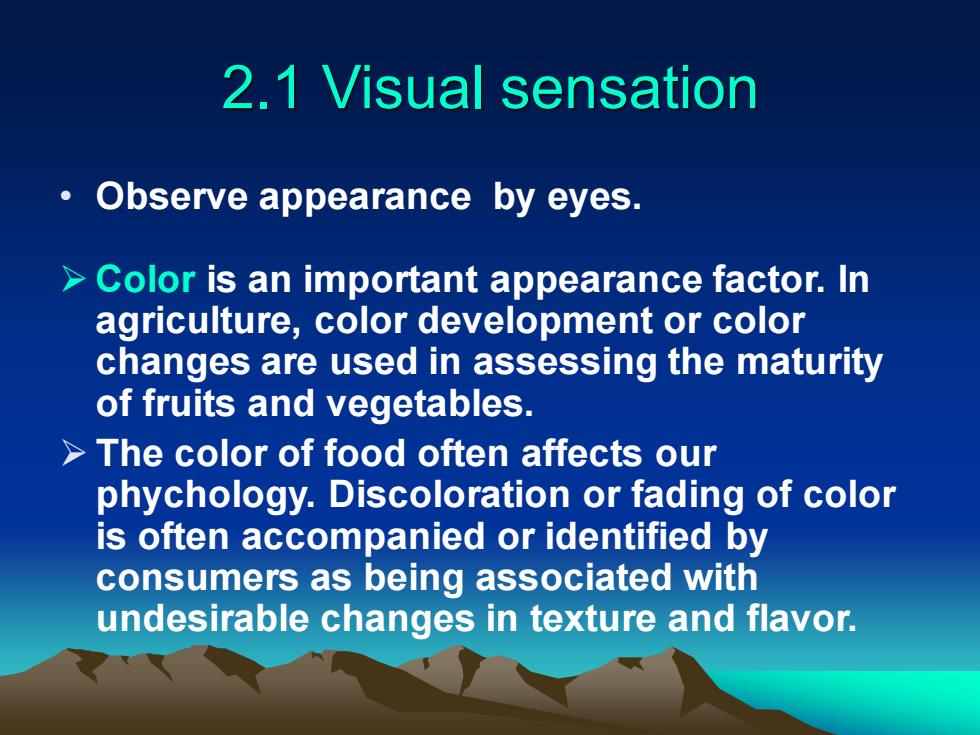
• Sensory evaluation have been widely used in examination of food quality, purchase of raw material, change of technical process, storage of food, R&D of new product, and market investigation
• Sensory evaluation have been widely used in examination of food quality, purchase of raw material, change of technical process, storage of food, R&D of new product, and market investigation

2. Category of sensory test • Visual sensation • Olfaction • Taste • Touch
2. Category of sensory test • Visual sensation • Olfaction • Taste • Touch

2.1 Visual sensation • Observe appearance by eyes. ➢ Color is an important appearance factor. In agriculture, color development or color changes are used in assessing the maturity of fruits and vegetables. ➢ The color of food often affects our phychology. Discoloration or fading of color is often accompanied or identified by consumers as being associated with undesirable changes in texture and flavor
2.1 Visual sensation • Observe appearance by eyes. ➢ Color is an important appearance factor. In agriculture, color development or color changes are used in assessing the maturity of fruits and vegetables. ➢ The color of food often affects our phychology. Discoloration or fading of color is often accompanied or identified by consumers as being associated with undesirable changes in texture and flavor

• Appearance characteristics of gloss, transparency and turbidity are often important
• Appearance characteristics of gloss, transparency and turbidity are often important

2.2 Olfaction • There is a number of relationship between food odor and its fresh degree, and processing manner. • Odor in foods is most commonly attributed to compounds containing sulfur, nitrogen, and certain halogens
2.2 Olfaction • There is a number of relationship between food odor and its fresh degree, and processing manner. • Odor in foods is most commonly attributed to compounds containing sulfur, nitrogen, and certain halogens